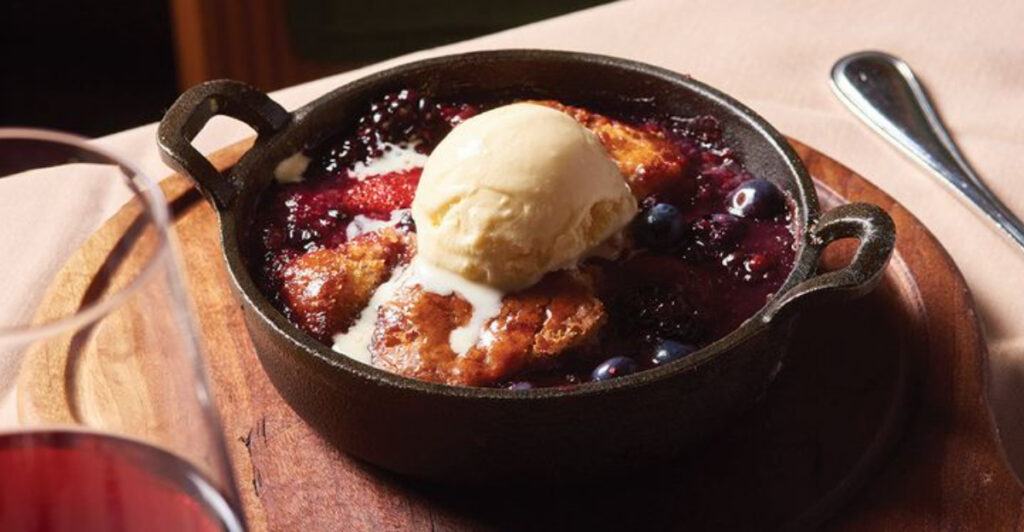North Carolina’s food scene goes way beyond barbecue and sweet tea. The Tar Heel State has quietly gifted the world with some truly unexpected culinary treasures. From fizzy drinks to spicy condiments, these 15 foods have surprising roots in North Carolina soil. Get ready to discover the hidden food gems that put this Southern state on the culinary map!
1. Texas Pete Hot Sauce: The Carolina Fire
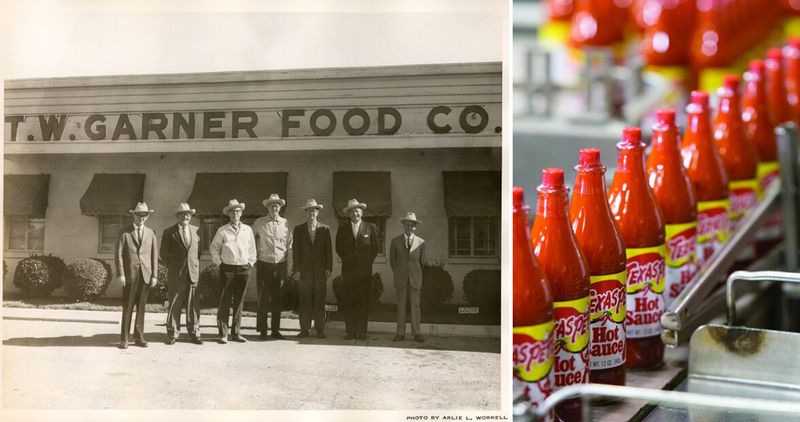
Despite its Lone Star name, this fiery condiment was born in Winston-Salem back in 1929. The Garner family created this peppery sauce during the Great Depression, naming it after their marketing executive’s suggestion to give it a “cowboy” feel.
The sauce quickly became a kitchen staple across the Southeast, appearing on everything from eggs to barbecue. Today, the family-owned company still produces every bottle in North Carolina, pumping out millions annually from the same city where it all began.
2. Pepsi-Cola: The Pharmacy Creation
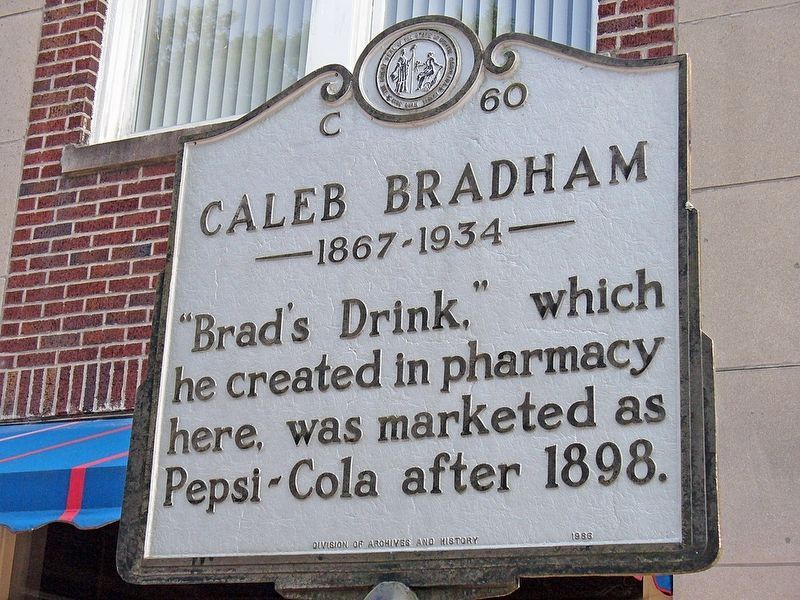
Long before Pepsi battled Coke for global dominance, it was simply “Brad’s Drink” – a digestive aid concocted in 1893 by New Bern pharmacist Caleb Bradham. Mixed in his drugstore, the fizzy drink combined sugar, water, caramel, and kola nuts.
Bradham renamed his creation Pepsi-Cola in 1898, referencing the digestive enzyme pepsin and kola nuts. The soda’s birthplace remains preserved in downtown New Bern, where visitors can see the original pharmacy fountain where America’s second-most-famous cola was born.
3. Cheerwine: The Ruby Red Soda
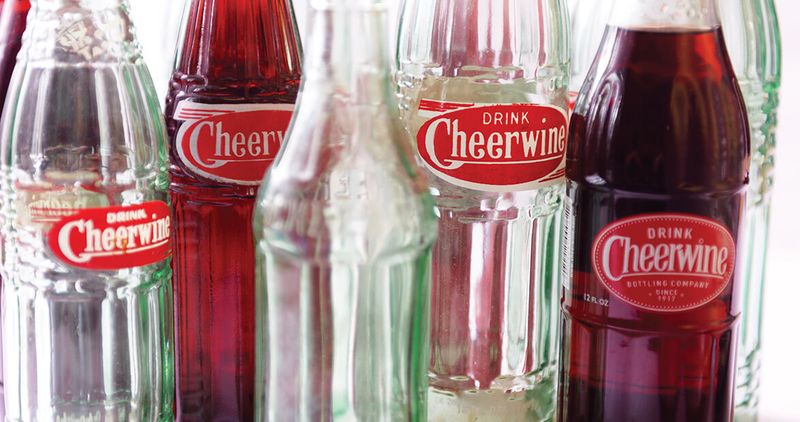
Born during sugar rationing of 1917, this burgundy-colored soda emerged from L.D. Peeler’s Salisbury bottling plant as a wild cherry alternative to traditional colas. Its deep red color and bubbly sweetness quickly earned a loyal following.
Five generations later, Cheerwine remains family-owned and operated in North Carolina. The distinctively sweet cherry soda has inspired everything from barbecue sauce to ice cream, becoming such a state icon that locals simply call it “Nectar of North Carolina.”
Annual Cheerwine Festivals draw thousands to celebrate this fizzy hometown hero.
4. Livermush: The Mountain Breakfast Block
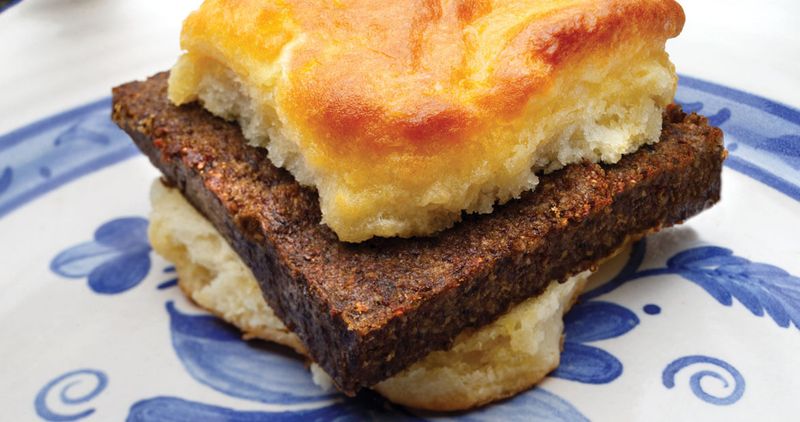
Hungry German settlers in western North Carolina created this unique breakfast meat from pig liver, head parts, and cornmeal spiced with sage and black pepper. Sliced and fried until crispy, livermush developed as a practical way to use every part of the pig.
Towns like Shelby and Marion celebrate this humble food with annual festivals. State law actually defines authentic livermush as containing at least 30% pig liver!
Locals enjoy it with eggs, between biscuits, or even on sandwiches with grape jelly – a combination that baffles outsiders but delights Carolina natives.
5. Calabash-Style Seafood: The Lightly Dusted Delicacy
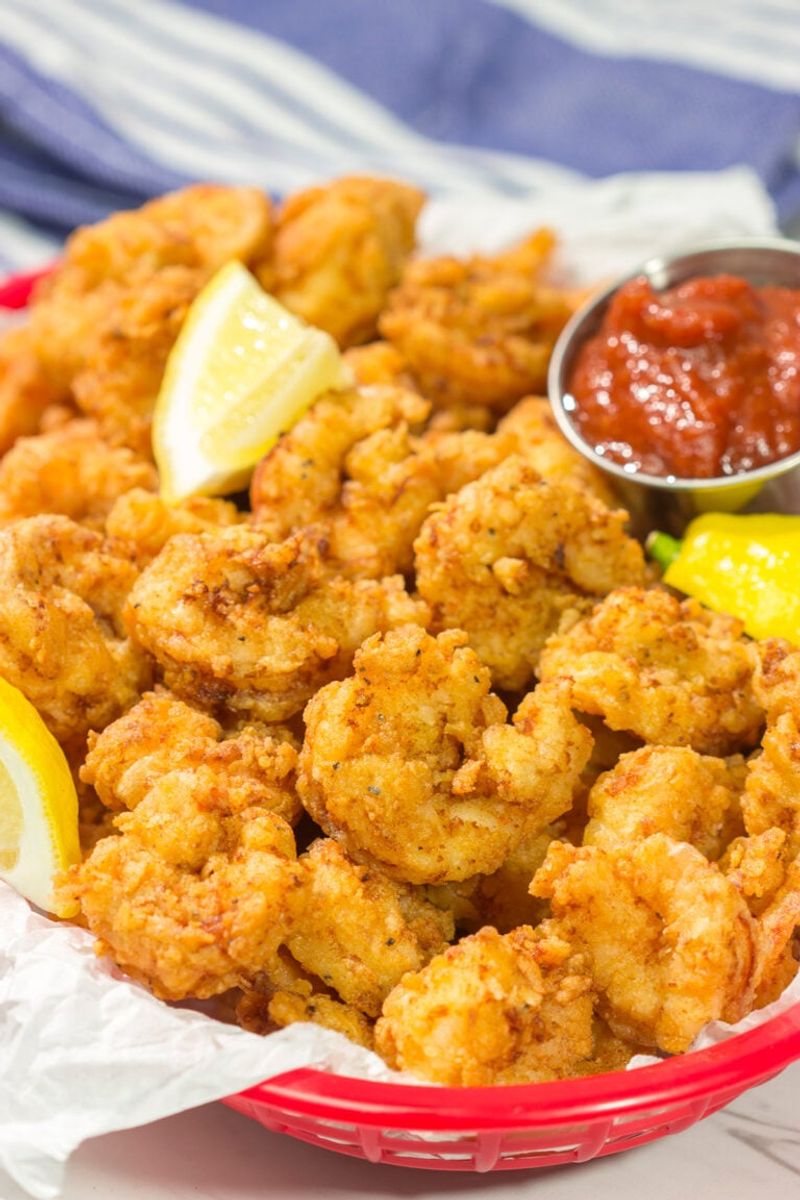
Fishermen’s wives in the tiny coastal town of Calabash perfected this cooking technique in the 1930s. Using the day’s fresh catch, they created a signature style: seafood lightly dusted in seasoned flour and flash-fried to delicate perfection.
Unlike heavy batters, Calabash-style lets the seafood’s natural flavors shine through. The technique became so famous that over 30 seafood restaurants sprouted in the tiny fishing village.
Even country music star Jimmy Durante helped spread the word, signing off his 1950s TV shows with “Goodnight, Mrs. Calabash, wherever you are” – reportedly referring to a restaurant owner who fed him this distinctive seafood.
6. Sun Drop Pound Cake: The Citrus-Infused Dessert

North Carolina bakers transformed a regional citrus soda into culinary magic. This moist, dense cake incorporates Sun Drop soda directly into both batter and glaze, creating a bright, lemon-lime flavor that’s distinctively Southern.
Though Sun Drop originated in Missouri, North Carolina embraced it so completely that the state became the drink’s spiritual home. Rural church potlucks and family reunions across the Piedmont region wouldn’t be complete without this sunshine-yellow dessert.
Family recipes are guarded secrets, with some adding pudding mix for extra moisture or a splash of moonshine for kick.
7. Mt. Olive Pickles: The Cucumber Salvation
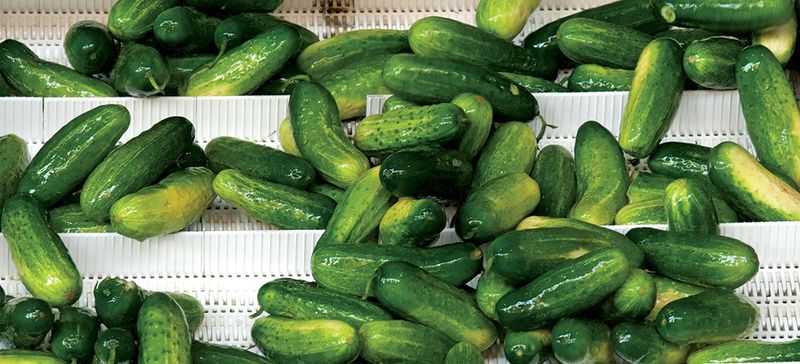
A 1926 surplus of cucumbers sparked entrepreneurial creativity in the small town of Mt. Olive. Rather than letting farmers’ crops go to waste, local businessmen formed the Mt. Olive Pickle Company, purchasing the excess harvest for brining.
From these humble beginnings emerged America’s largest independent pickle company. The town embraces its pickle identity with fervor, hosting an annual New Year’s Eve Pickle Drop where a glowing pickle descends at midnight instead of a ball.
Company founders pioneered ethical business practices too, insisting on fair prices for farmers and becoming one of the first integrated workplaces in the South.
8. Krispy Kreme Doughnuts: The Glazed Phenomenon

Vernon Rudolph started something magical in 1937 when he began selling hot doughnuts through a Winston-Salem storefront window. Using a secret yeast-raised recipe purchased from a New Orleans chef, he created pillowy doughnuts covered in a warm sugar glaze.
The intoxicating aroma became such a draw that Krispy Kreme installed its now-famous “Hot Now” signs. These glowing red beacons still cause traffic jams when illuminated.
Though now international, the original shop maintains its North Carolina roots. The company’s signature is that melt-in-your-mouth texture achieved through a proprietary proofing process unmatched by imitators.
9. Pimento Cheese Burger: The Melty Masterpiece
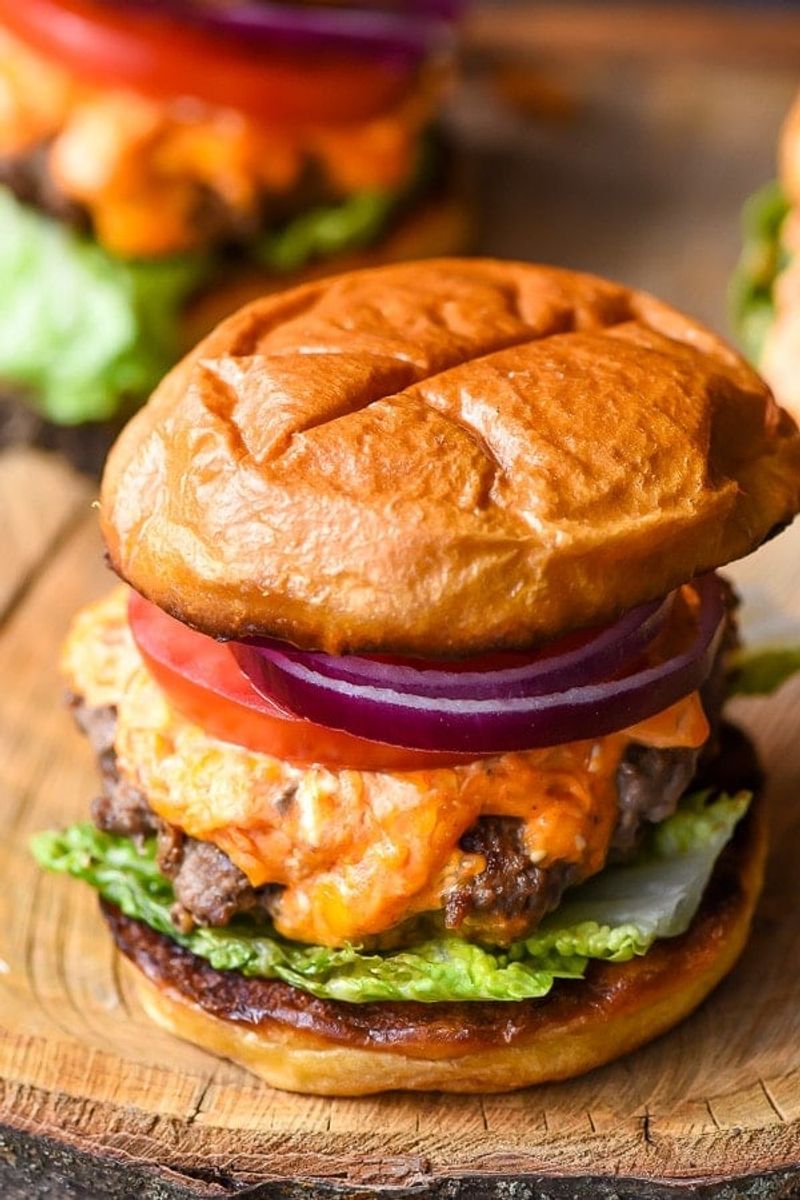
North Carolina burger joints revolutionized the humble hamburger by crowning it with a dollop of pimento cheese that melts into gooey perfection. This brilliant combination marries tangy homemade pimento cheese with grilled beef patties.
Charlotte drive-ins pioneered this regional specialty in the 1950s. The magic happens when the warm burger melts the cold cheese spread, creating rivers of creamy orange goodness that infuse every bite.
Local chefs elevate this comfort food with variations using jalapeños, bacon, or even fried green tomatoes, but purists insist on the classic: sharp cheddar, mayo, and roasted red peppers on a perfectly grilled patty.
10. Sweet Potato Pie: The Harvest Celebration
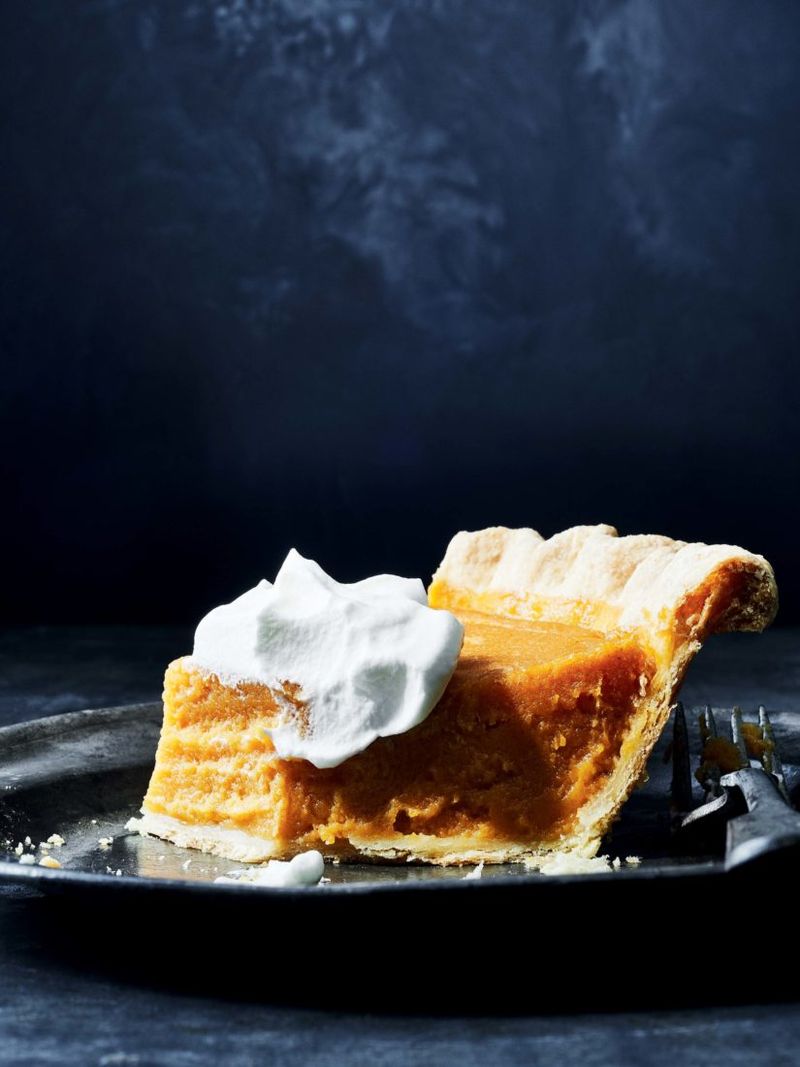
North Carolina leads the nation in sweet potato production, so it’s fitting that the state perfected this silky, spiced dessert. Generations of family recipes transformed the humble root vegetable into velvety custard pies that grace holiday tables.
African American culinary traditions shaped this dessert into its current form. The pies feature nutmeg, cinnamon, and sometimes bourbon or vanilla, creating a dish that’s simultaneously rustic and sophisticated.
Eastern North Carolina church suppers still feature competitive baking, with secret recipes passed down through generations. Some families insist on baking the potatoes rather than boiling to intensify the natural caramelized sweetness.
11. Moravian Cookies: The Paper-Thin Spice Discs

These impossibly thin cookies arrived with German-speaking Moravian settlers who established Salem (now Winston-Salem) in 1766. Using rolling pins and meticulous technique, bakers create spice cookies so delicate you can almost see through them.
Traditional recipes feature molasses, ginger, cloves and cinnamon – spices that were once rare luxuries. Modern versions include lemon, black walnut, and chocolate, but the original ginger remains most beloved.
During Christmas, Moravian families still gather for cookie-making parties, rolling dough paper-thin and cutting intricate shapes. Legend claims the cookies were designed to last through long sea voyages – though few can resist eating them immediately!
12. Bojangles’ Cajun Fries: The Spicy Sensation
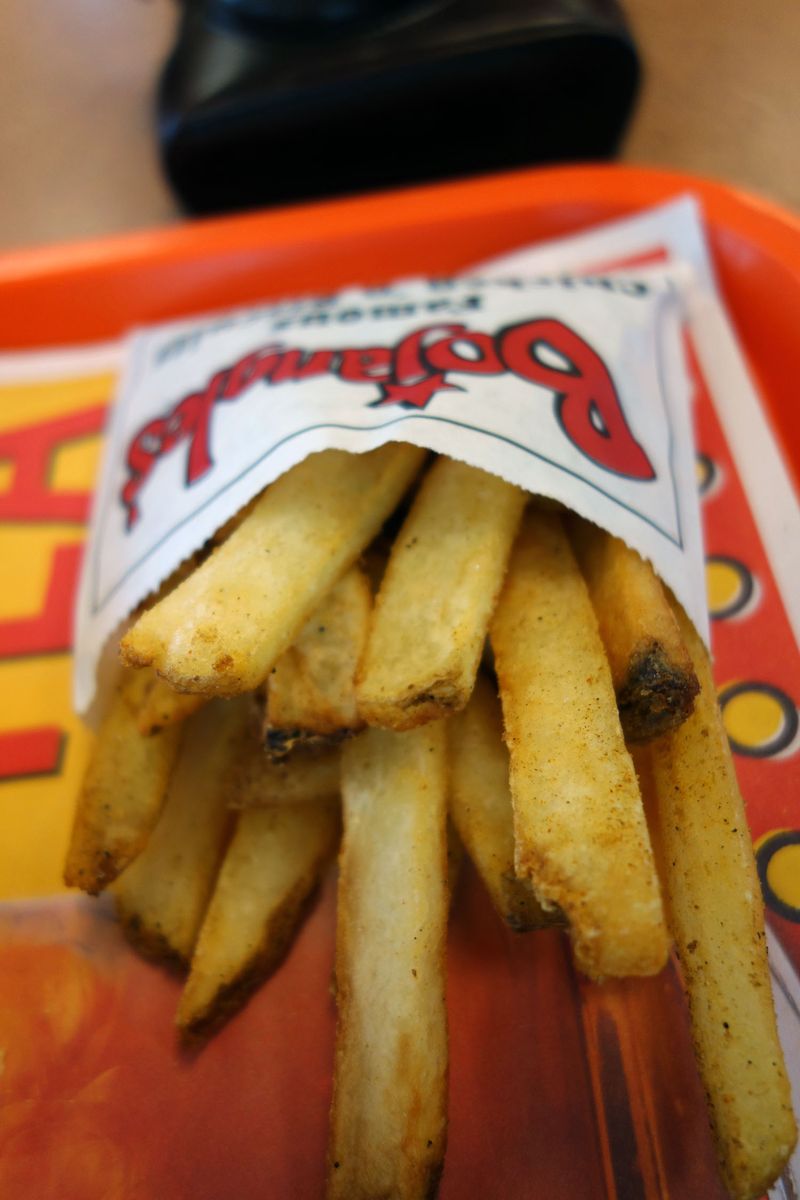
From a humble Charlotte storefront in 1977, Bojangles launched a french fry revolution. Their distinctive orange-tinted fries come dusted with a secret blend of Cajun spices that deliver a slow-building heat unlike any other fast-food offering.
The chain’s founders, Jack Fulk and Richard Thomas, insisted on fresh-cut potatoes rather than frozen, creating a crispy exterior and fluffy interior that perfectly carries their signature seasoning. These spicy spuds quickly became the required side for any proper Southern meal.
Regional food critics have tried and failed to replicate the exact spice blend, which remains a closely guarded company secret.
13. Country Ham Biscuits: The Dawn Tradition
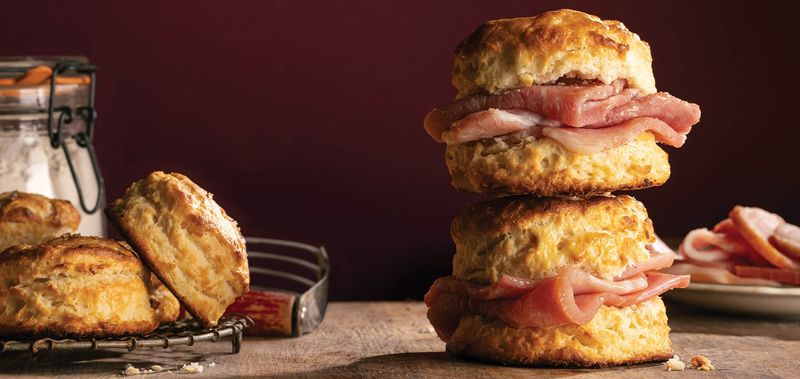
Eastern North Carolina perfected the marriage of salt-cured country ham and fluffy, buttery biscuits. This breakfast tradition features paper-thin slices of intensely flavored ham nestled inside split buttermilk biscuits – sometimes enhanced with a smear of butter or dollop of fig preserves.
The process of creating authentic country ham involves months of curing with salt, brown sugar, and pepper before aging. Many North Carolina families maintain smokehouses specifically for this purpose.
Sunday church gatherings traditionally feature trays of these miniature biscuits, with each congregation claiming their church ladies make the best version in the state.
14. Scuppernong Wine: The Ancient Vintage
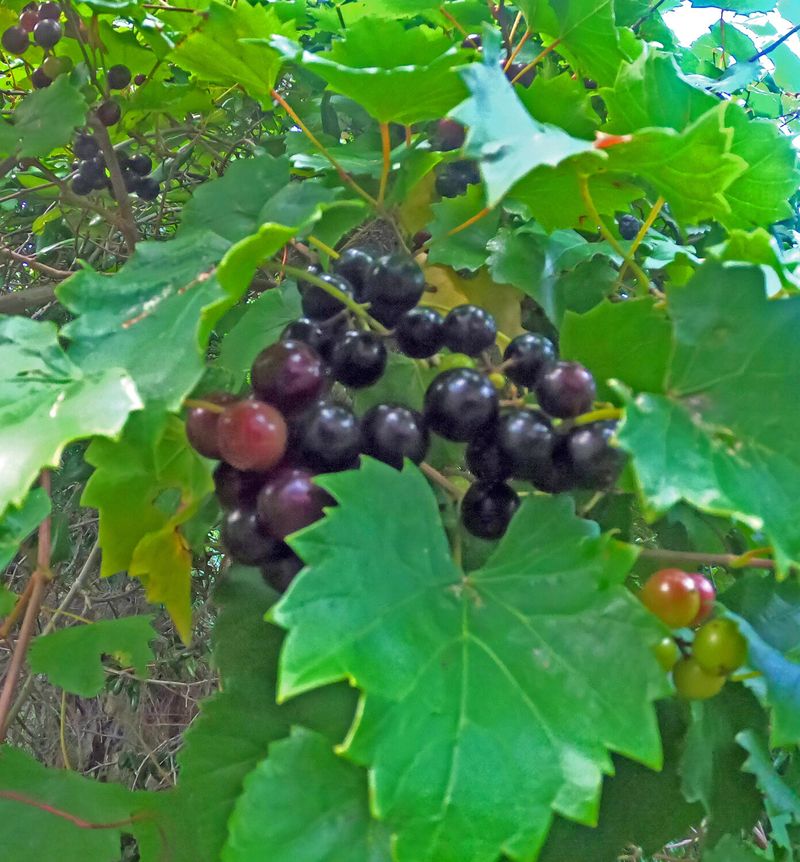
North Carolina’s state fruit produces America’s oldest wine variety. These large, bronze-green grapes were cultivated by Native Americans long before European arrival and later became the foundation of America’s first commercial wines.
The Mother Vine on Roanoke Island, believed to be over 400 years old, still produces these distinctive grapes. Their thick skins and sweet musky flavor create wines unlike any European variety – typically sweeter with floral notes and a distinctive finish.
Before Prohibition decimated the industry, North Carolina led American wine production, largely through these indigenous grapes. Today, small vineyards are reviving this historic tradition, creating award-winning wines from America’s original grape.
15. Sonker: The Surry County Cobbler
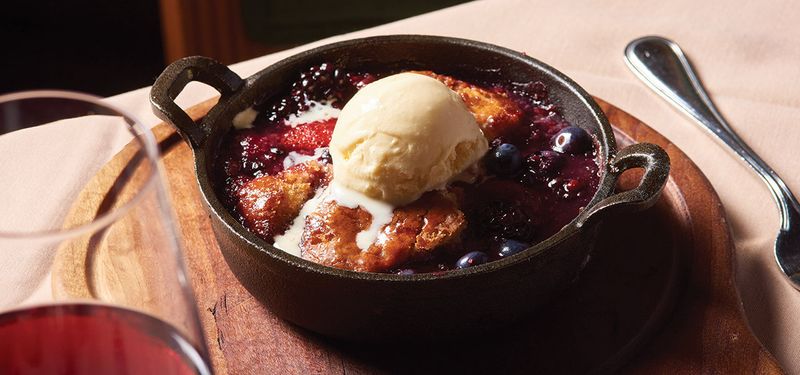
Found only in a small pocket of northwestern North Carolina, sonker defies easy description. Part cobbler, part deep-dish pie, this rustic dessert features fruit swimming in sweet batter, often topped with a unique “dip” – a creamy vanilla sauce poured over the warm pastry.
Surry County families debate proper ingredients fiercely. Some versions use sweet potatoes or berries, while others incorporate regional apples or peaches. The dessert’s unusual name remains mysterious, though some linguists connect it to Scottish settlers.
So culturally significant is this dessert that Surry County hosts an annual Sonker Festival celebrating its various forms.

